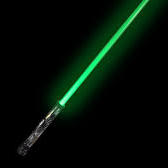

Moderators: richierich, ua900, PanAm_DC10, hOMSaR





skywalker92 wrote:Am I correct? If not please correct me.
kurtverbose wrote:skywalker92 wrote:Am I correct? If not please correct me.
Almost. The fan tip speed is what governs the rpm of the low pressure shaft. It's the low pressure compressor and turbine that is running too slowly, not the fan running too fast. Allowing them to speed up makes the compressor and turbine much smaller. Compare the sizes and stages of the PW1000G low pressure system with the LEAP, even though the LEAP has a slightly smaller, and so potentially faster rpm fan.


lightsaber wrote:1. High RPM high spool. 22,300RPM maximum. What that does is a very efficient high compressor and even better for the high turbine.
2. Contra rotating. This is the root cause of the EIS issues. For a very high speed high spool going the opposite direction of the low spool creates a very fast bearing speed. The LEAP is corotating to avoid the risk. About a 3% fuel burn advantage going counter rotating.
3. 3:1 gearbox on the 10,047 rpm low spool means the low turbine is much simpler and more efficient. Most of why the pw1100G is lighter than the LEAP is the reduction in low turbine stages.
4. I started a new number to talk the low compressor. By having it at a decent Mach number not only makes it more efficient, but much higher pressure ratio per stage. That helps engine efficiency.
5. Low RPM fan. That cuts shock wave losses. Oh, the engine would have done better with a 3.5:1 gearbox, but the gearbox is the longest lead item. Hence why the MRJ gets the C-series box instead of one built for half the horsepower as was needed.

2. Contra rotating. This is the root cause of the EIS issues. For a very high speed high spool going the opposite direction of the low spool creates a very fast bearing speed. The LEAP is corotating to avoid the risk. About a 3% fuel burn advantage going counter rotating.

akiss20 wrote:I do not really know much about bearing design, but I do know a bit about rotordynamics. That quote from aviationweek only mentions adding damping to the bearing. Does that inherently imply increasing bearing size? Can the bearing not be kept the same size but with additional damping mechanisms added to it?